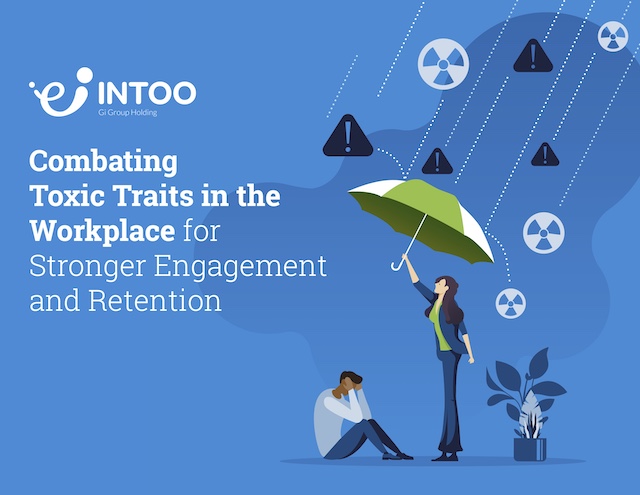Employee incentives are rewards or benefits provided by employers to motivate employees and boost their morale in the workplace—ultimately enhancing job performance and satisfaction, and aiding in attracting top talent. These incentives come in different forms, whether monetary, non-monetary, or relating to career development, and encompass a wide range of offerings, such as bonuses, stock options, flexible work arrangements, professional development opportunities, and recognition programs. The aim of employee incentives is to create a positive work environment that encourages employees to excel in their roles, fosters loyalty to the organization, and contributes to improved overall productivity. By aligning employees’ individual goals with the company’s objectives, incentives can play a pivotal role in attracting, retaining, and maximizing the potential of talented personnel within a company.
In this article, we discuss the importance of employee incentives, 20 employee incentive ideas, and how to effectively implement these programs for the best results.
The History and Growth of Employee Incentive Programs
Employee incentive programs have their roots in the early 20th century, primarily emerging during the industrial revolution as a response to the need for increased worker productivity and satisfaction. The Ford Motor Company is often credited with introducing one of the earliest forms of incentive programs by implementing the five-dollar workday in 1914. This program aimed to attract and retain skilled workers by offering higher wages, resulting in improved morale and productivity. Over time, the concept evolved, with various industries experimenting with different incentive structures.
In recent decades, there has been a significant increase in the emphasis on employee incentive programs. As workplaces must compete to attract and retain talent, organizations have recognized that traditional compensation and benefits packages are insufficient to fully motivate and engage employees. In addition, employers have needed to find ways to appeal to an increasingly diverse group of workers. As a result, companies have instituted varied and unique programs to stand out in the marketplace.
 How Employee Incentive Programs Can Improve Productivity & Motivation
How Employee Incentive Programs Can Improve Productivity & Motivation
Employee incentive programs act as a powerful tool to align individual and organizational goals, creating a win-win scenario where both productivity and employee well-being thrive. They accomplish this alignment in a number of ways.
1. Rewards give employees a clear goal
Employees can sometimes feel detached from a particular business outcome, making it more challenging to feel motivated to reach a goal that’s been assigned to them. When a specific, personal reward is tied to the accomplishment, employees can have an additional reason to work toward achieving the business goal.
2. Rewards help employees feel valued
When employees are given recognition—whether monetary, verbal, or other—for their accomplishments, they are more likely to feel appreciated and like a central part of the success of the company. As a result, they are more likely to invest additional energy and commitment into their work, leading to increased productivity.
3. Incentives can contribute to a positive work culture
When incentive programs are used equally throughout the organization, they can promote a strong company culture, which in turn can lead to employees’ improved job satisfaction and overall mental and emotional health.
4. Investment in employees’ success fosters loyalty
As individuals see the organization’s investment in their growth and success, they are more inclined to remain dedicated to the company, reducing turnover rates and promoting long-term engagement.
20 Employee Incentive Ideas
While the list of incentive ideas below is not exhaustive, it provides a starting point for your organization. Most employers will not use every one, and shouldn’t, as the incentives should be based on your workforce’s needs and your company’s goals. Use this list to find the right combination of offerings to use now or to add to your current and future programs.
1. Performance bonuses
Provide cash bonuses based on individual or team achievements, such as meeting sales goals, completing a project under budget or early, or going above and beyond in response to an unusual client request. These bonuses may be rewarded at the end of the calendar or fiscal year, quarterly, or upon completion of special projects.
2. Commission structures
Offer commissions or profit-sharing based on sales or project success. Having a clearly defined structure, eligible employees can track their earnings as they accomplish goals. The ability to self-monitor where they are relative to where they need to be to earn a commission can be motivating.
3. Annual raises
Reward employees with annual salary increases based on performance. While some may be happy to receive any increase at all, when employees’ performance pays off with a larger raise, they will be motivated by the recognition and work hard to continue to boost their earning potential.
4. Spot awards
Give small cash rewards or gift certificates for exceptional performance on specific tasks or projects. You may decide to recognize only those employees who went above and beyond, or entire teams in appreciation for their collaborative efforts.
5. Referral bonuses
Offer monetary rewards for referring qualified candidates who get hired. You may decide to structure the bonus amounts based on the pay for the position being hired. Roles that are more challenging to fill will have higher referral bonuses.
6. Profit sharing
Distribute a portion of company profits to employees as a share of the company’s achievements. This practice can help employees feel ownership of and invested in the company’s success, driving them to continue to excel in their work.
7. Flexible work arrangements
Allow for remote work, flexible hours or days, or compressed workweeks. Flexibility demonstrates trust in your employees and an appreciation for their work-life balance. When employees can work the hours when they are most productive, and/or work remotely (which gives back time otherwise spent commuting), the employers benefit from increased output and higher engagement.
 8. Recognition programs
8. Recognition programs
Implement a system to publicly acknowledge and celebrate employee achievements. When employees are recognized by management, leadership, or their peers, a positive sense of belonging is instilled, helping workers to feel more connected to each other and to the organization.
9. Wellness programs
Offer gym memberships, fitness classes, wellness workshops, nutritional coaching, or other health-related incentives. You can also encourage walking meetings, allowing teams to get outside and move while catching up on matters not requiring computers or other visual aides. Investing in aspects of employees’ wellness not only demonstrates your interest in their health but also helps you to benefit from fewer sick days and an energized workforce.
10. Employee of the Month
Recognize outstanding employees with a designated parking spot or trophy. In a large organization, a parking spot near the entrance of your building can be coveted by your employees. A physical plaque or trophy publicly naming the employee for their achievement can help them feel appreciated and can motivate them to continue their efforts toward excellence.
11. Casual dress days
Allow employees to dress casually on specific days as a reward. In more formal office environments, the opportunity to dress down can lead to a more relaxed and celebratory mood, stimulating bonding among employees and encouraging productivity.
12. Team outings
Organize team-building events, outings, or activities to foster camaraderie. In-office parties, outdoor games, online workshops and events (for remote teams), and offsite meals can all help employees to develop an appreciation for their colleagues and employer. Outings such as escape rooms, virtual golf, and scavenger hunts can allow employees to see different sides of their coworkers and find new commonalities, which can help them to work with one another more effectively.
13. Classes
Offer opportunities for skill development and learning relevant to employees’ current roles and/or the roles they wish to have. Employees can take classes either online or in person. Online courses can benefit those who wish to learn at their own pace. When they acquire a sense of mastery in a new skill, the empowerment and confidence gained also help with overall job satisfaction and performance.
14. Mentorship programs
Pair employees with mentors to facilitate career growth. Employees benefit from learning from senior professionals within the organization who have experience that’s specific to the company, as well as from those from other businesses with varied knowledge. Getting guidance from someone in a position an individual aspires to can be motivating as well as helpful in learning necessary skills.
 15. Leadership development
15. Leadership development
Identify high-potential employees and provide leadership training. These types of programs typically involve one-on-one career coaching and often also include group workshops. Meeting with a leadership coach at regular intervals can help individuals develop skills and meet goals with defined milestones, putting them on a clear path to advancement.
16. Cross-training
Allow employees to learn skills outside of their job description for career diversification. Provide opportunities for employees to work on projects with departments other than their own in order to learn about other areas of the business and acquire additional skills.
17. Career coaching
Career coaches can help employees at any stage of their careers to identify strengths and weaknesses, discover interests, and determine the next steps to the role they want, whether it’s the next step in a vertical path or a road that winds to other roles and areas within the organization. Having personalized guidance from a dedicated coach every step of the way can be highly incentivizing for employees to remain loyal to their employer.JTNDaWZyYW1lJTIwc3JjJTNEJTIyaHR0cHMlM0ElMkYlMkZyZXNvdXJjZXMuaW50b28uY29tJTJGaHVic0Zyb250JTJGZW1iZWRfY3RhJTJGNDk5OTg3JTIyJTIwc2Nyb2xsJTNEJTIybm9uZSUyMiUyMGJvcmRlciUzRCUyMjAlMjIlMjBmcmFtZWJvcmRlciUzRCUyMjAlMjIlMjB3aWR0aCUzRCUyMjI1MCUyMiUyMGhlaWdodCUzRCUyMjMzMCUyMiUyMHNhbmRib3glM0QlMjJhbGxvdy1zY3JpcHRzJTIwYWxsb3ctc2FtZS1vcmlnaW4lMjBhbGxvdy1mb3JtcyUyMGFsbG93LXBvcHVwcyUyMGFsbG93LXRvcC1uYXZpZ2F0aW9uJTIyJTNFJTNDJTJGaWZyYW1lJTNF
18. Workshops
Hold workshops onsite or offsite for groups of employees to attend to strengthen their hard and soft skills. Allowing employees to be in an interactive, hands-on scenario outside of their usual work setting can spark new ideas, boost knowledge and broaden expertise.
19. Tuition reimbursement
Provide financial assistance for employees pursuing further education or degrees. Some companies offer reimbursement for continuing education or participation in upskilling programs to help employees obtain degrees or certifications in areas relevant to their roles. This can be a significant incentive, not only because of the financial burden such education can produce, but also because it shows the company is dedicated to the futures of its employees.
20. Conference registration
Provide the opportunity for employees to attend conferences related to their roles, interests, and industry. Professionals often feel inspired by panel discussions and workshops that expose them to new ideas. When they return to the office, they funnel that inspiration into their work, helping to foster innovation and creativity.
 How to Effectively Run Employee Incentive Programs
How to Effectively Run Employee Incentive Programs
Implementing employee incentive programs effectively requires a thoughtful and strategic approach.
- Assess the current policies and practices to identify gaps and areas for improvement.
- Determine the incentives that will most benefit your workforce. A diverse mix of incentives, including monetary rewards, non-monetary perks, and career development opportunities, should be offered to cater to different preferences and motivations.
- Inform employees about the available incentives, their criteria, and the expected outcomes. Make sure information about the incentives is readily available, on the company Intranet or another location, and update your workforce whenever there is a change or addition to the offered programs. Include this information when onboarding new employees.
- Add the information to your career page to help attract new talent.
- Define the criteria for earning incentives, to ensure they are transparent, fair, and achievable, to foster a sense of equity among employees.
- Regularly review and adjust the program based on feedback and results to keep it aligned with evolving organizational goals, trends, and employee needs.
Practices to Avoid When Planning Employee Incentive Programs
When planning employee incentive programs, it’s crucial to avoid certain practices that could undermine the program’s effectiveness and potentially harm the work environment.
- Don’t reward luck rather than effort or performance. This practice can lead to resentment and demotivation among employees who have worked hard but did not receive recognition or rewards.
- Don’t have ill-defined or constantly changing goals. Doing so can create confusion and frustration, making it difficult for employees to understand what is required to earn incentives.
- Don’t pit employees against each other in unhealthy competition. This can result in a toxic work atmosphere and sabotage teamwork.
- Don’t overemphasize short-term gains over long-term growth. While many incentives can reward short-term accomplishments, you want to balance this practice with recognizing those that contribute to long-term growth, such as skill development and career advancement.
- Don’t overlook the diverse preferences and needs of employees when designing incentive programs. This can lead to inequitable rewards and alienation.
Conclusion
Employee incentive programs can create a more positive work culture by fostering a sense of appreciation for your employees’ efforts, helping them to feel valued and a sense of belonging. As a result, they will remain dedicated to your organization’s success. By using ideas and best practices offered in this article, your company will gain a more productive, engaged, and loyal staff.INTOO offers a variety of career development solutions to help any organization. Expert career coaches help guide employees at any job level to improve performance, create a strategy for advancement, or to identify the next steps in their careers with you. Contact us today to learn how our career development programs can incentivize your employees and strengthen your workforce.
Robyn Kern is a seasoned business writer who has written in the HR, education, technology, and nonprofit spaces. She writes about topics including outplacement, layoffs, career development, internal mobility, candidate experience, succession planning, talent acquisition, and more, with the goal of surfacing workforce trends and educating the HR community on these key topics. Her work has been featured on hrforhr.org and trainingindustry.com.


 How Employee Incentive Programs Can Improve Productivity & Motivation
How Employee Incentive Programs Can Improve Productivity & Motivation 8. Recognition programs
8. Recognition programs 15. Leadership development
15. Leadership development How to Effectively Run Employee Incentive Programs
How to Effectively Run Employee Incentive Programs








